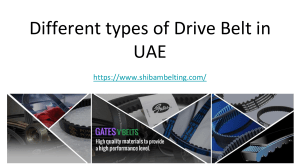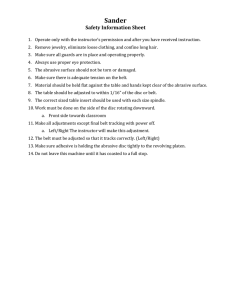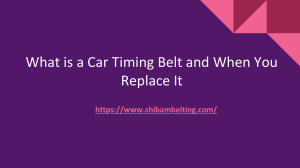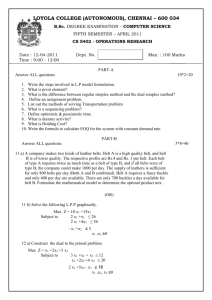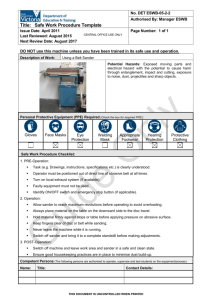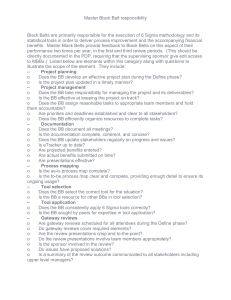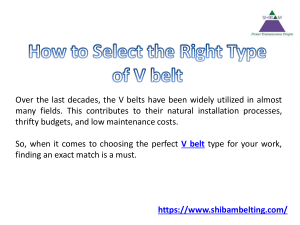safety recommendations for the use of abrasive belts
advertisement
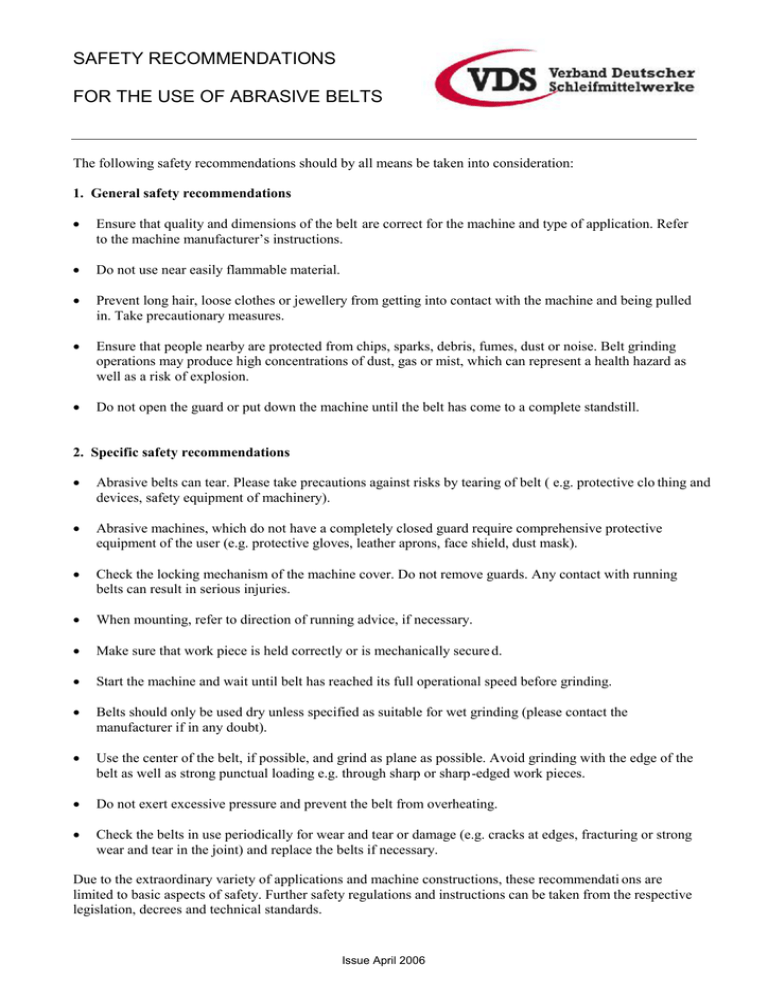
SAFETY RECOMMENDATIONS FOR THE USE OF ABRASIVE BELTS The following safety recommendations should by all means be taken into consideration: 1. General safety recommendations • Ensure that quality and dimensions of the belt are correct for the machine and type of application. Refer to the machine manufacturer’s instructions. • Do not use near easily flammable material. • Prevent long hair, loose clothes or jewellery from getting into contact with the machine and being pulled in. Take precautionary measures. • Ensure that people nearby are protected from chips, sparks, debris, fumes, dust or noise. Belt grinding operations may produce high concentrations of dust, gas or mist, which can represent a health hazard as well as a risk of explosion. • Do not open the guard or put down the machine until the belt has come to a complete standstill. 2. Specific safety recommendations • Abrasive belts can tear. Please take precautions against risks by tearing of belt ( e.g. protective clo thing and devices, safety equipment of machinery). • Abrasive machines, which do not have a completely closed guard require comprehensive protective equipment of the user (e.g. protective gloves, leather aprons, face shield, dust mask). • Check the locking mechanism of the machine cover. Do not remove guards. Any contact with running belts can result in serious injuries. • When mounting, refer to direction of running advice, if necessary. • Make sure that work piece is held correctly or is mechanically secure d. • Start the machine and wait until belt has reached its full operational speed before grinding. • Belts should only be used dry unless specified as suitable for wet grinding (please contact the manufacturer if in any doubt). • Use the center of the belt, if possible, and grind as plane as possible. Avoid grinding with the edge of the belt as well as strong punctual loading e.g. through sharp or sharp-edged work pieces. • Do not exert excessive pressure and prevent the belt from overheating. • Check the belts in use periodically for wear and tear or damage (e.g. cracks at edges, fracturing or strong wear and tear in the joint) and replace the belts if necessary. Due to the extraordinary variety of applications and machine constructions, these recommendati ons are limited to basic aspects of safety. Further safety regulations and instructions can be taken from the respective legislation, decrees and technical standards. Issue April 2006



